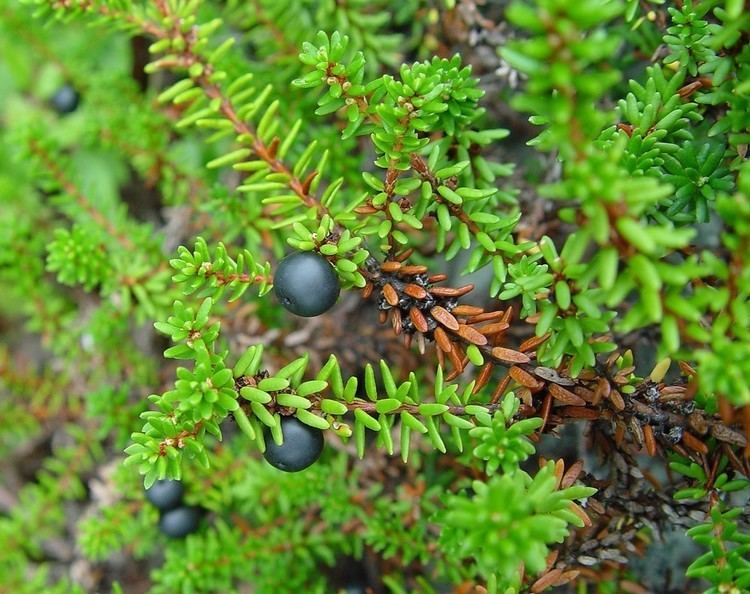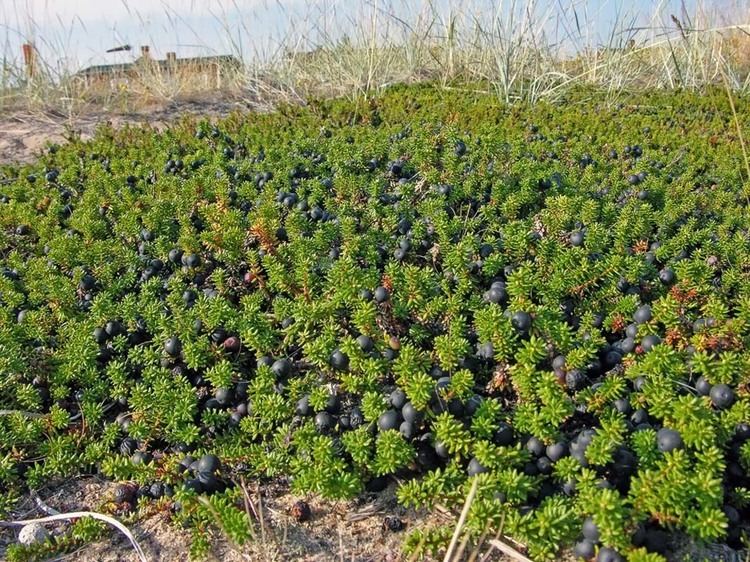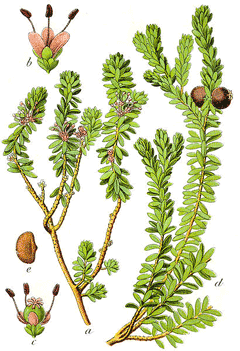Rank Species | Clade Angiosperms Higher classification Empetrum | |
 | ||
Similar Empetrum, Vaccinium uliginosum, Cloudberry, Andromeda polifolia, Erica tetralix | ||
Empetrum nigrum, crowberry, black crowberry, or, in western Alaska, blackberry, is a flowering plant species in the heather family Ericaceae with a near circumboreal distribution in the northern hemisphere. It is also native in the Falkland Islands. It is usually dioecious, but there is a bisexual tetraploid subspecies, Empetrum nigrum ssp. hermaphroditum, that occurs in more northerly locations and at higher altitude.
Contents

Evolutionary biologists have explained the striking geographic distribution of crowberries as a result of long-distance migratory birds dispersing seeds from one pole to the other.

The metabolism and photosynthetic parameters of Empetrum can be altered in winter-warming experiments.
Description

The leaves are 3–6 mm (0.12–0.24 in) long, arranged alternately along the stem. The fruits are drupes, 4–6 mm (0.16–0.24 in) wide, usually black or purplish-black but occasionally red.

The fruits contain mostly water. Their vitamin content is low, as is the concentration of volatile liquids, the lack of which makes them almost odorless. The acidity is lower than is typically encountered in forest berries, and benzene acids are almost absent.
Subspecies
Cultivation and uses

E. nigrum can be grown in acidic soils in shady, moist areas. It can be grown for the edible fruit, as a ground cover, or as an ornamental plant in rock gardens, notably the yellow-foliaged cultivar 'Lucia'. The fruit is high in anthocyanin pigment, and can be used to make a natural food dye.
After waning popularity, E. nigrum is regaining its reputation as an edible fruit. It provides a steady crop and the gathering is relatively easy. Cooking enhances the flavor. The fruits make good pie and jam.
In subarctic areas, E. nigrum has been a vital addition to the diet of the Inuit and the Sami. The Dena'ina (Tanaina) harvest it for food, sometimes storing in quantity for winter, and like it mixed with lard or oil. The fruits are usually collected in fall, but if not picked they may persist on the plant and can be picked in the spring. They keep well in a cool place without any special preparation. The Inuit and Native Americans mix them with other berries, especially blueberries.
The leaves and stems are used in Dena'ina medicine for diarrhea and stomach problems; they are boiled or soaked in hot water, and the strained liquid drunk. In Dena'ina plantlore in the Outer and Upper Inlet area of Lake Clark, the root is also used as a medicine, being used to remove a growth on an eye and to heal sore eyes. The roots are boiled and the eyes are washed with the strained, cooled tea, to which a little sugar may be added.
In Labrador, where the name "blackberry" is used, the smoke of the burning stems and leaves is used to smoke fish, notably Salmon, Sea Trout and Arctic Char.
